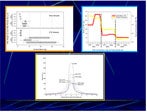Inorganic fillers in organic dielectrics enhance the properties of thermal conductivity, relative permittivity, and electrical conductivity making them useful in outdoor high voltage insulation applications. Alumina tri-hydrate or silica fillers enhanced thermal conductivity of silicone rubber dielectrics thereby minimizing material erosion at dry band arcing sites by lowering hot spot temperature. Barium titanate in combination with aluminum powder increases relative permittivity resulting in a significant grading of the surface electric field when applied as a housing material to high voltage bushings. Controlled electrical conductivity of silicone dielectrics through the use of antimony-doped tin oxide filler binary composites improves the pollution performance when applied as a housing material to outdoor insulation.
Alumina tri-hydrate or silica fillers in silicone rubber
Inorganic fillers in organic dielectrics enhance the properties of thermal conductivity, relative permittivity, and electrical conductivity making them useful in outdoor high voltage insulation applications. Alumina tri-hydrate or silica fillers enhanced thermal conductivity of silicone rubber dielectrics thereby minimizing material erosion at dry band arcing sites by lowering hot spot temperature. Barium titanate in combination with aluminum powder increases relative permittivity resulting in a significant grading of the surface electric field when applied as a housing material to high voltage bushings. Controlled electrical conductivity of silicone dielectrics through the use of antimony-doped tin oxide filler binary composites improves the pollution performance when applied as a housing material to outdoor insulation.
High permittivity silicone rubber insulation
The use of high relative permittivity silicone rubber for stress relief in insulation systems has been investigated for application to the housings of bushings, surge arresters and cable terminations for stress reduction on the surface of these devices. Fillers such as BaTiO3, TiO2, and metal powders have been investigated for increasing the relative permittivity of silicone rubber insulation. Particle size, shape, aspect ratio and concentration all play a role in the relative permittivity that can be attained in silicone rubber.
Resistive silicone rubber insulation
Improvements to the pollution performance of organic outdoor insulation can be obtained by providing a resistive or partially conducting material for the housing of insulators and bushings. In addition to the hydrophobicity of silicone rubber, this concept provides all of the advantages of a semiconductive glaze on porcelain insulators in controlling the electric stress, preventing moisture condensation by heating, and controlling dry band arcing across protective creepage.
